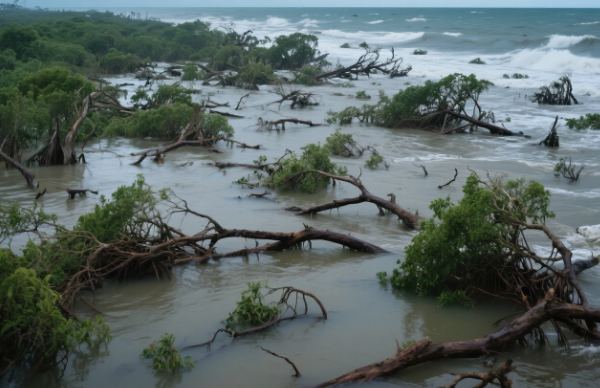Floods and landslides caused by persistent heavy rains in the Eastern Cape province of South Africa have resulted in nine deaths, a school bus carrying students was swept away by floodwaters and 11 students are missing. The floods directly destroyed fish spawning grounds and migration paths in major rivers, including the Mzimvubu River, causing fish stocks to plummet by 70 per cent. Monitoring by the South African Institute of Aquatic Biology has shown signs of regional extinction of endangered species such as the Maputo barb. Sediment and pollutants carried by the flood waters altered the physicochemical properties of the water bodies, further inhibiting the ability of aquatic organisms to recover. Wetlands and forests along the riverbanks were washed away by the floods, resulting in the loss of more than 34 per cent of vegetation cover. The Koloha Forest in Stutheim, for example, which is an important carbon sink in the Eastern Cape, took at least 10 years to regain basic ecological functions. The loss of vegetation has also led to bare soil and a more than threefold increase in the risk of mudslides during the rainy season. The floods destroyed the habitats of 12 endemic amphibian species, some of which the South African National Biodiversity Institute has warned could become extinct within five years if urgent measures are not taken.

Leave a Reply